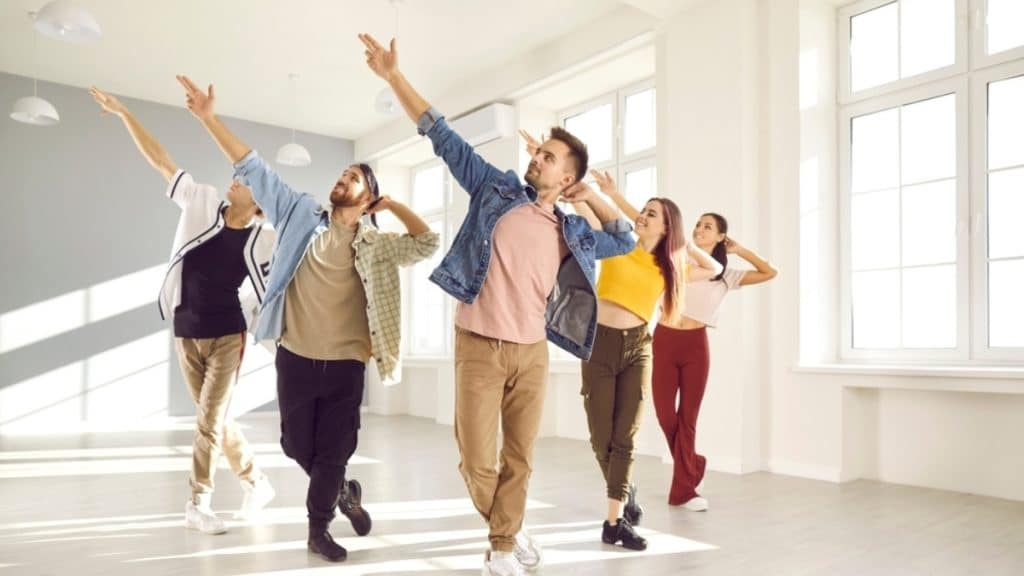Ruby Marzovilla brings her expertise in accessibility advocacy, health consulting, and customer service to every role she undertakes. Currently, she serves as the accessibility lead for COLAGE National’s core team, where she supports staff by creating individualized access plans, coordinating ASL interpreters for large-scale events, and facilitating disability justice-centered curricula.
Since 2017, Ms. Marzovilla has also worked as a freelance health consultant, helping clients achieve their wellness goals with tailored fitness plans, form guidance, and motivational coaching. Her innovative approach includes virtual workout sessions, making health advice accessible to clients from anywhere.
A graduate of Oberlin College with a degree in biochemistry and anthropology, Ruby honed her ability to balance precision with creativity during her time as a sports medicine aide and choreographer for music videos. Outside of her work, Ruby enjoys infusing her passion for performance into dance choreography projects.
Music video choreography involves creating dance moves that match а song’s mood, beat, or message. It does more than get the steps right – it turns dance into a visual story. With popular platforms like TikTok, choreographers now make content for their audiences there. The creation process requires knowledge and strategic planning to work well.
Some professional creators study dance in school to choreograph music videos, and many colleges offer degrees or certificates in choreography. These programs teach creators physical training and artistic insight to craft meaningful and technically sound dance videos. Artists also learn and practice choreography techniques and the history and culture of dance styles. This way, they can make informed respectful choices in their work.
In the choreography process, studying the music comes first. This process goes beyond just syncing the steps to а rhythm or counting beats. Artists must listen to the whole song and learn the lyrics, story, and feeling the music conveys. This understanding lets them interpret the music and create а dance video that shows their brand identity and conveys the message in each dance movement. For instance, it guides artists’ choices, helping them pause on a downbeat or accent part of a lyric for a dramatic effect.
For TikTok videos, studying the music helps plan the choreography. When creators understand the song’s concept, they can create a choreography that shows the music’s feeling – playful, strong, or emotional. The theme should match the creator’s style. If their style is more of afrobeat or contemporary, the mood should reflect that authentically. Most importantly, creators should think about their dancers’ skills. They should analyze what dance moves their dancers know well and pick moves they can do with confidence. The choreography should impress but stay safe and consider physical limits.
Teamwork matters when making dance TikTok videos. Artists should share the message and feel they are after with their team. TikTok dances focus more on expression and attitude than perfection, so feel and personality matter more than technique. Artists should be open-minded and let dancers suggest edits that improve the mood or make а dance video more interesting. Dancers like it when choreographers use their ideas – they see the process as fun and collaborative rather than strictly professional.
Rehearsal is key in choreography. Dancers must keep working on creative steps and try different things to improve what works. Planning the big moments or strongest parts first, then practicing the connections, helps build the entire routine. It also helps dancers match emotions, lyrics, and movements so their dance feels real on camera. Professional choreographers suggest trying to choreograph without music first. While this might feel odd initially, it promotes creativity and expressiveness, strengthening body-musical awareness and allowing the body to move naturally.
When making TikTok dance videos, the camera acts like а dance partner. The phone or professional DSLR camera should move with the dancers to add flow and energy. If a dancer turns and moves sideways, the camera should pan smoothly in that direction or mirror the motion. When dancers move through space, this is called blocking. When the camera follows or shows these moves, it’s called staging.
Camera angles change how the dance looks. High angles make movements look smaller and less strong. Low angles make dancers look more powerful and make jumps or leg motions more dramatic. Quick angle changes that match the musical beats catch attention and get more views. Sometimes, creators use close-up shots to highlight costumes, facial expressions, or specific details that make the sequence more engaging. After filming editing brings out the best of the performance, while tagging the person who made the original music shows respect and support.

